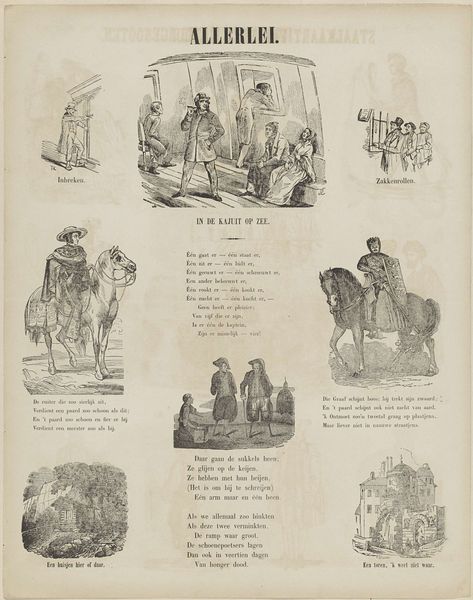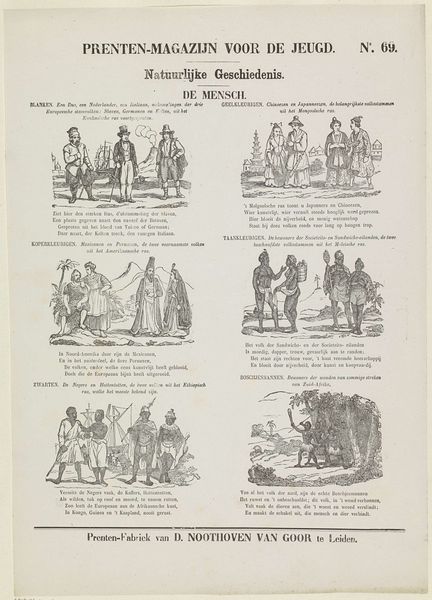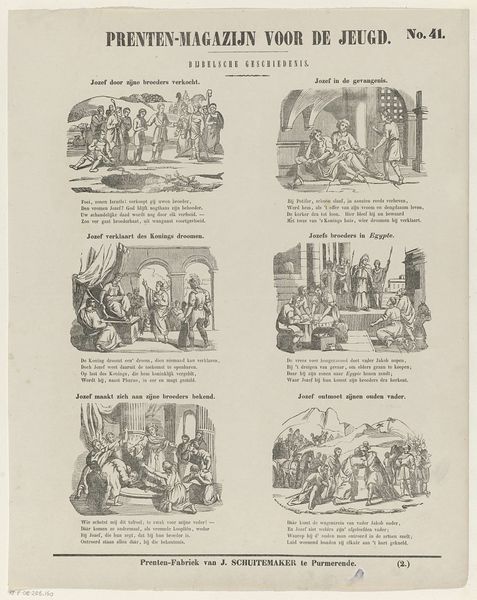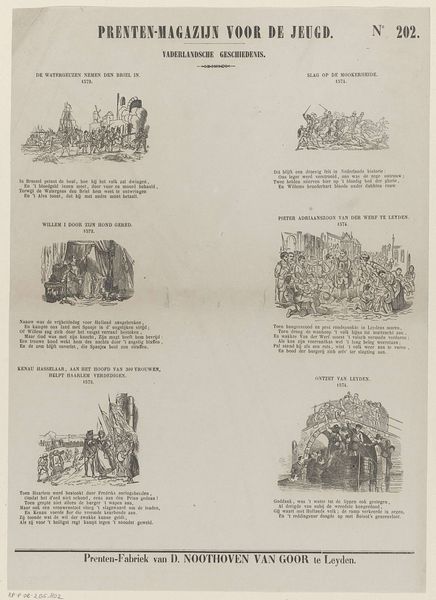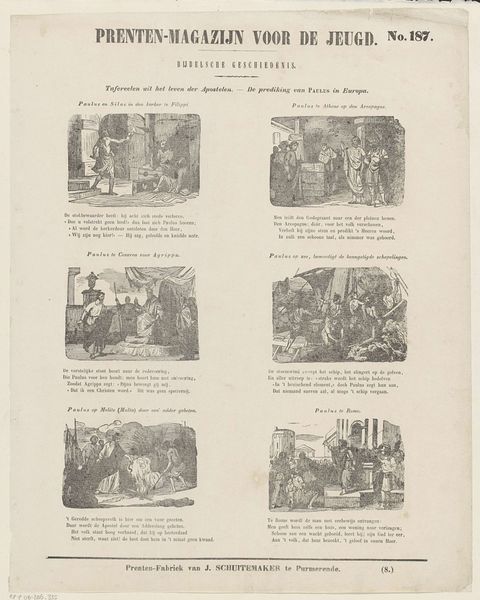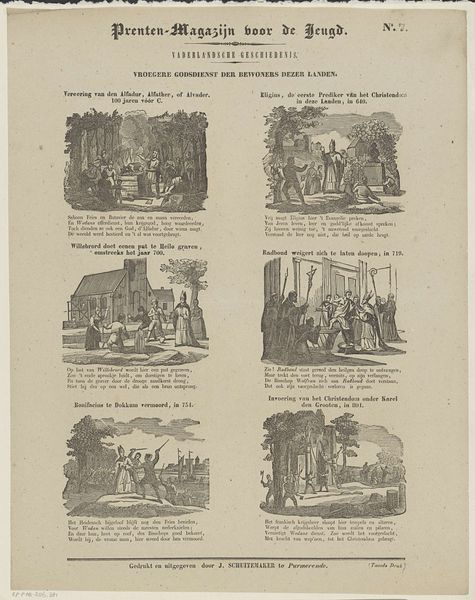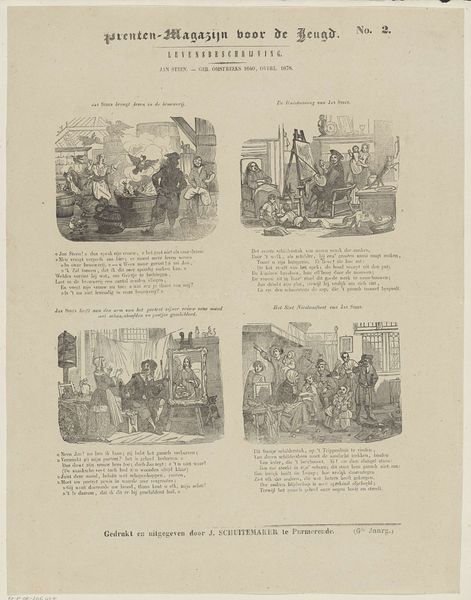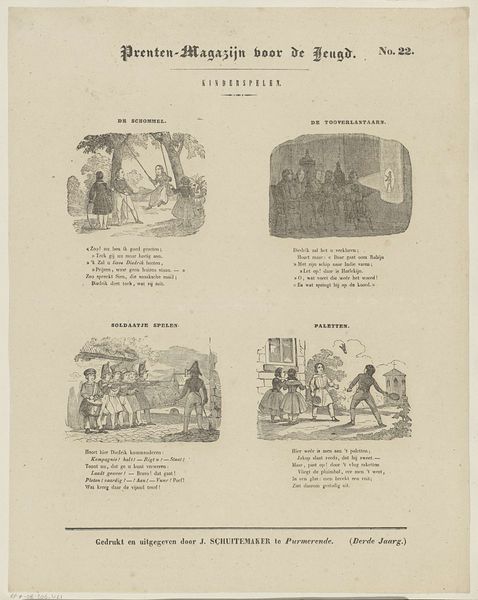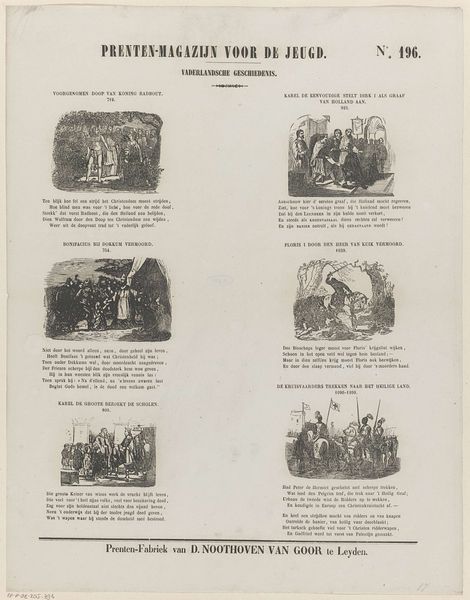
print, engraving
#
dutch-golden-age
# print
#
orientalism
#
genre-painting
#
history-painting
#
engraving
Dimensions: height 433 mm, width 337 mm
Copyright: Rijks Museum: Open Domain
Curator: Looking at Jan Schuitemaker's 1844 engraving "De Mensch", or "The Human" we encounter what seems to be a fascinating, albeit somewhat dated, attempt at classifying humanity. Editor: Dated is polite! My immediate reaction is... unsettling. It's like a visual taxonomy gone wrong. Those groupings, each in their little box, feel so clinical, almost...caged. Does that make sense? Curator: It does. Schuitemaker, working within the context of 19th-century scientific thought and growing European colonial expansion, attempts to depict different races and cultures through a lens heavily influenced by the prevailing Orientalist perspectives. The rigid composition with separate boxes enhances the perception of division, doesn’t it? Editor: Absolutely! Each section, meticulously bordered, feels less like a celebration of diversity and more like specimens pinned under glass. Look at the outfits: Even though there are people from diverse places such as Asia or Africa the artist still groups them by an alleged "race". The clothing feels almost theatrical, contributing to this sense of them being studied from afar, objectified almost. Curator: That’s perceptive. Note, too, the arrangement – placing Europeans at the top, implying a certain hierarchy… Editor: Ugh, so classic, so uncomfortable! But you’re right; there’s definitely a deliberate placement at work. I’m also curious about the decision to render everything in engraving. It lends a stark, almost archaeological feel to the whole thing. As if humanity itself were something to be unearthed and documented with cold, hard lines. I'm getting the sense of an ordered almost rational system imposing on something inherently more chaotic. Curator: Precisely. The print medium allows for mass distribution, which further amplified the impact and reach of these visual representations. Schuitemaker's work offers a valuable opportunity to reflect on the historical construction of racial categories and the biases inherent in early attempts at depicting cultural diversity. Editor: It definitely gives you a lot to reflect on – how far we've come, and how much those old ways of seeing can still creep into our perceptions, despite ourselves. Curator: Indeed, this somewhat simplistic and ideologically-informed visual guide reminds us how cultural memory is preserved and carried over throughout visual signs. Editor: Thanks! That perspective shifted my view into a richer reading!
Comments
No comments
Be the first to comment and join the conversation on the ultimate creative platform.
